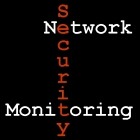Bejtlich and Bradley on SANS Webcast Monday 2 Nov

Ken Bradley and I will conduct a Webcast for SANS on Monday 2 Nov at 1 pm EST. Check out the sign-up page. I've reproduced the introduction here. Every day, intruders find ways to compromise enterprise assets around the world. To counter these attackers, professional incident detectors apply a variety of host, network, and other mechanisms to identify intrusions and respond as quickly as efficiently as possible. In this Webcast, Richard Bejtlich, Director of Incident Response for General Electric, and Ken Bradley, Information Security Incident Handler for the General Electric Computer Incident Response Team, will discuss professional incident detection. Richard will interview Ken to explore his thoughts on topics like the following: How does one become a professional incident detector? What are the differences between working as a consultant or as a member of a company CIRT? How have the incident detection and response processes changed over the last decade? What challenges make...












